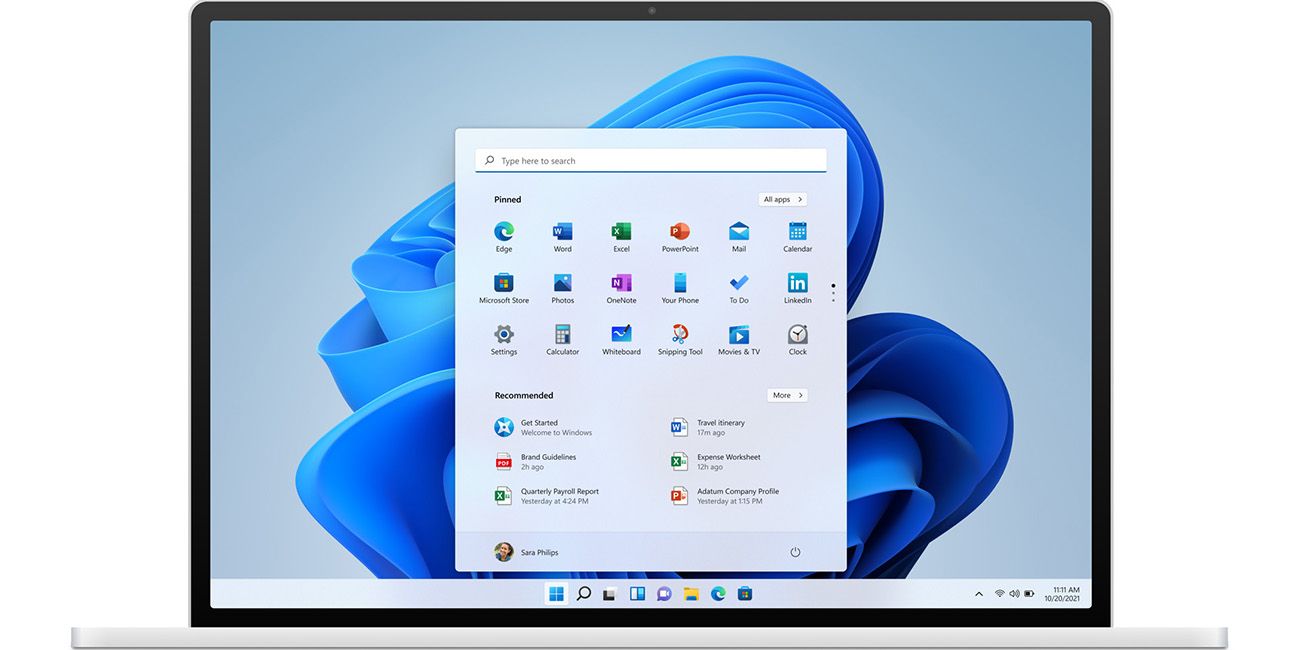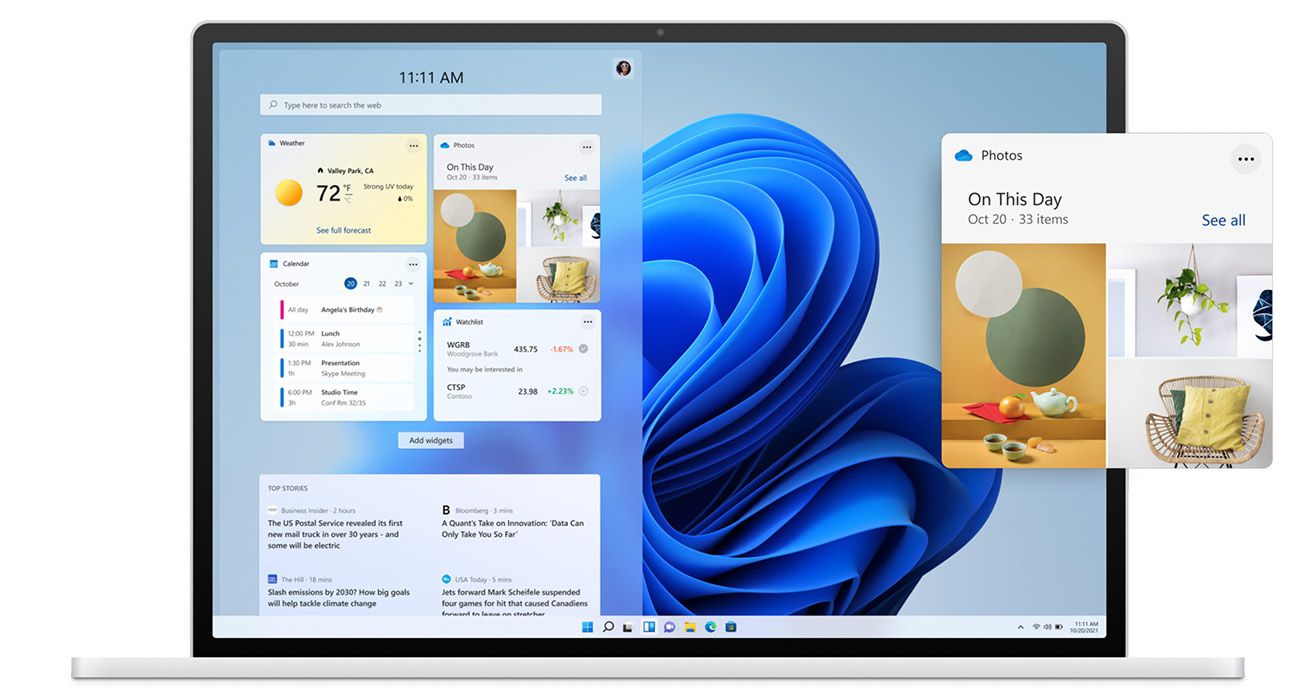Are you wondering whether your Mac will run Windows 11 when it launches? You're not alone. Microsoft's latest operating system brings loads of new features and design upgrades, many of which are similar to macOS functionality.
Although installing Windows on a Mac has been a common task for many in the past, Windows 11 and M1 Macs bring some additional challenges to the table you should be aware of. Here's what you need to know about Windows 11 compatibility on your Mac.
The Basics of Installing Windows on a Mac
Installing Windows on Mac has been a popular way to get the best of both platforms on a single device. Historically, it's been easy to install Windows on a Mac thanks to the built-in Boot Camp tool. Boot Camp is Apple's multi-boot utility that walks you through partitioning your Mac's disk to install Windows alongside macOS, which you can then choose between when booting.
However, on Apple's M1 Silicon chips, Boot Camp is currently not supported. It is possible that Apple may support installing Windows 11 on older Intel-based Macs using Boot Camp, but the company hasn't confirmed this.
Additionally, according to Windows 11's system requirements, any system that runs the new OS needs to offer a security module called a TPM, which Macs do not have. Microsoft backtracked on the TPM requirement for the testing period, but it is expected that the requirement will be part of the public release of Windows 11.
Similarly, the high system requirements have been a surprise. Many Windows computers have been left out and will not be able to run Windows 11, including the Surface Pro 4 and Surface Studio 2. Here's what Microsoft says you need to run Windows 11:
- 1GHz dual-core processor
- 4GB RAM
- 64GB of storage
- UEFI, Secure Boot capable
- Trusted Platform Module (TPM) 2.0
- Graphics card compatible with DirectX 12
- A display larger than 9 inches, with 720p resolution
- Microsoft account and an internet connection
Some additional features have specific requirements that you can find on Microsoft's website.
Windows 11 is planned to release in holiday 2021 and will be available as a free upgrade for all PCs already running Windows 10. If you're a Mac user hoping to run Windows 11 on your device, here is a preliminary analysis on some of the potential problems with this so you're aware.
What Is a TPM?
A TPM (which stands for Trusted Platform Module) is a security chip that enhances encryption and secure logins. This comes integrated into newer machines, whereas older motherboards can have a chip retrofitted. Windows can use the TPM chip for better protection with BitLocker and Secure Boot.
Do Macs Have a TPM?
Some Intel-based Macs feature a TPM chip that is integrated into the processor, but not supported. It is possible that Apple will offer some method to activate and utilize the TPM chip for a Windows 11 installation, but this is yet to be announced.
Apple's M1 Macs do not feature a TPM, but they have Apple's own T2 security chip installed. With Apple slowly shifting from Intel-based processors to its own silicon chips, the outlook isn't great for those who want to natively run Windows on their Mac going forward.
Will Windows 11 Virtualization Work on a Mac?
If the dual-booting option doesn't work out, you might next turn to virtualization as another way to run Windows on your Mac. Instead of installing Windows 11 on your Mac's storage drive, you can use software that lets you emulate the OS instead.
Parallels, the company best known for its virtualization software on Mac, has announced that the latest version of Parallels Desktop 17 will feature full support for the upcoming macOS Monterey and Windows 11 operating systems.
This means that you will be able to run Windows 11 using virtualization software on your Mac. Parallels 17 also contains a virtual TPM chip, which can bypass the Windows 11 requirement for a physical TPM.
On Intel-based Macs, Parallels 17 should be able to fully run Windows 11. It's also able to run a variety OSes as virtual machines, including all the way back to Windows XP. For macOS, it can handle Mac OS X Lion and newer, plus Linux distros.
Virtualization on M1 Macs
Virtualization is a bit different on M1-based Macs, though. Since Apple's silicon chips are based on ARM architecture, you will only be able to run ARM-based operating systems on M1 Macs. Currently, the Insider Previews for Windows 10 and Windows 11 are able to run on ARM-based software. Parallels has also stated that when the full version of Windows 11 is released to the public, it will run on Parallels 17.
A Windows ARM version is is a bit more problematic and has limited functionality. However, it seems that a Windows ARM virtualization using Parallels should be able to take full use of the powerful M1 silicon chip. Parallels' developers say that Windows on ARM can run both 32-bit and, more recently, 64-bit applications. That said, even on machines it's designed to run on, Windows on ARM can be fussy about x64 apps. So detailed testing once Windows 11 is released will allow us to truly judge its performance on an M1 Mac.
Parallels Desktop 17 is sold as a subscription, like most software these days. The Standard edition costs $79.99 per year, whereas the Pro edition costs $99.99 per year. The Pro edition includes a Visual studio debugging plugin that now works on M1 Macs. There are some other additional bonuses in this version, such as the ability to take advantage of more powerful hardware.
A trial version is also available if you would like to test it before purchasing.
What About Windows 365?
Microsoft recently announced Windows 365, its cloud-based PC solution. Windows 365 allows you to remotely access a cloud-based Windows environment from another system, directly from your browser. Thus, you can access Windows 365 on anything with a supported browser, including macOS and Android devices.
Windows 365 also supports Windows 11, so it's another great way to use Windows (albeit remotely) on your Mac if you want to avoid virtualization software.
What Will Happen to Windows 10?
If for any reason, your Mac is unable to run Windows 11, there's no need to worry. Microsoft has announced that it will officially support Windows 10 with updates until at least 2025. However, Windows 10 is expected to remain in use for much longer on old PCs.
Practically, then, you'll be able to keep running Windows 10 on your Mac with no issues for some time.
Windows 11 on a Mac: Worth it?
We're looking forward to testing Windows 11 on a Mac and see if it runs properly and efficiently. While the traditional method won't work quite the same, you'll still have options for running Windows 11 on any Mac. And there's a lot to anticipate in Windows 11 once it arrives.



